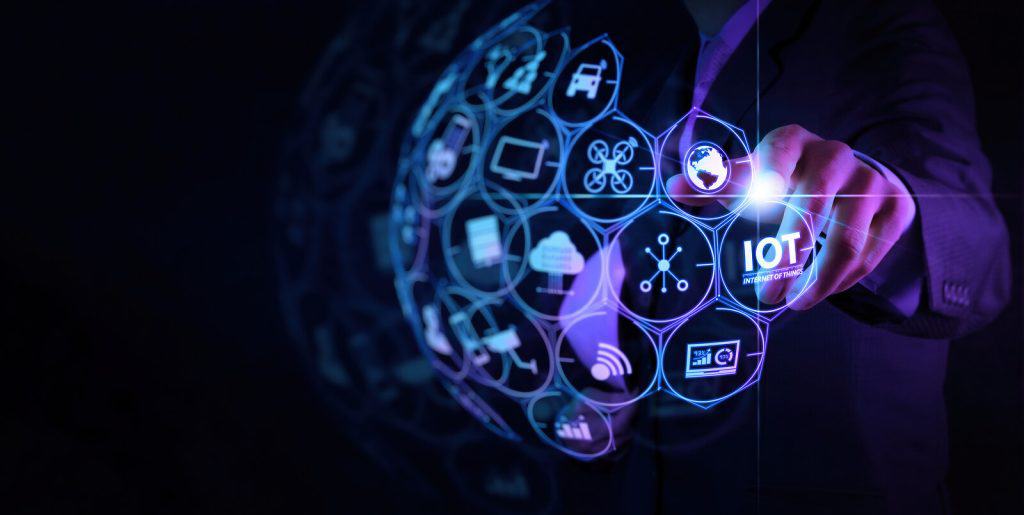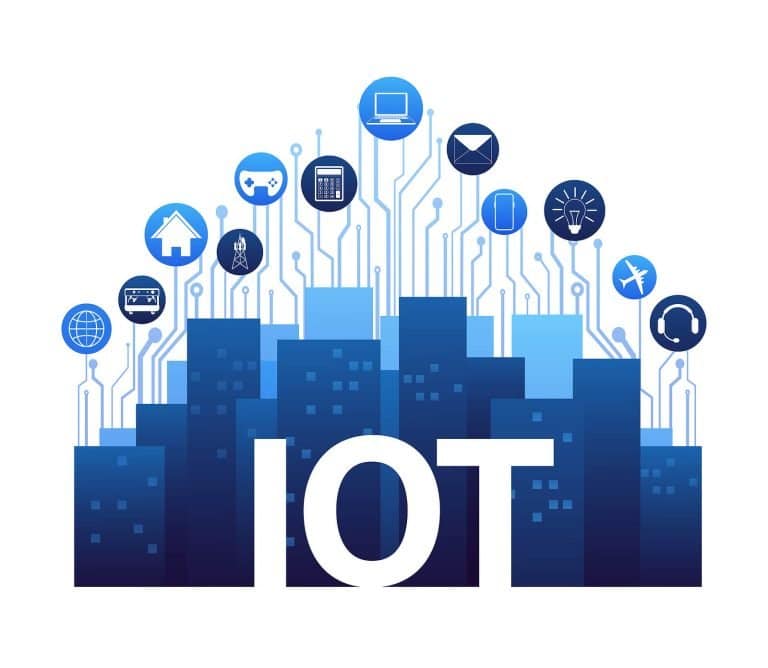IoT is a widely used term and means different things to different people. For many, it is a familiar concept and one that they can relate more to domestic life (interconnection in our homes between mobile phones, laptops, or Smart TVs), but IoT benefits go much further.
Table of Contents
ToggleWhat Is IoT?
IoT is an English acronym for Internet of Things and translates as the Internet of Things. IoT concerns the interconnection of different electronic terminals and gadgets through a network with which data can be collected, transmitted, and stored between various devices.
IoT aims to connect physical objects and reality with the Internet and cloud applications to make our lives easier on a personal and professional level. It enables the communication between processes, things, and people to exist.
An IoT network is a network in which there is a central node that is the one that links the different objects that are connected. We have an obvious example of this IoT network in our homes: We all have a router to which computers, tablets, smartphones, Smart TVs, and even light bulbs or electrical appliances are linked.
However, incorporating IoT or Internet of Things solutions in companies is crucial for their progress, making it possible to collect interesting data and drive innovation. It can lead to developing new lines of business that have yet to be considered or even adapted to some existing ones to remain competitive.
Benefits of IoT For Companies
Cost Reduction
The implementation of IoT or the Internet of Things in companies makes it possible for companies to monitor equipment and thus be able to reduce the time they are inactive.
With the implementation of IoT, failures can be foreseen, making it possible to save money.
In addition, the Internet of Things will make it possible to efficiently manage all phases of the business and reduce repetitive tasks, thus allowing all workers to spend as much time on more productive functions.
Improves User Experience
Thanks to the implementation of the Internet of Things, companies can provide their customers with small details that make a difference. For example, thanks to IoT, customers can be offered to track their orders in a real way. This makes customers happy and likely to make a purchase again, and you get a good user experience.
Help In Decision Making
Thanks to the IoT or Internet of Things, it is possible to save, manage and analyze customer data, making them aware of their preferences and trends.
This information provided by IoT helps decision-making. Knowing this user data will make it easier to decide where to go when planning more effective strategies, strengthening the brand image, and launching new products or services.
Allows Customization
Thanks to the IoT, companies can further analyze data on the habits of potential customers. This depth in analytics means that companies can customize the messages they want to give to each customer or supplier.
It improves their interaction and makes suppliers and customers feel that the company always meets their needs.
The IoT, in this aspect, means that everyone who has a link with the company (suppliers, customers, workers, associates, etc.) receives the message they want, thus avoiding spam.
Open New Business Opportunities
A company that implements IoT is seen as innovative and prepared for the rapid changes that occur in the market. This will make it possible to create new business relationships.
The incorporation of the Internet of Things allows the creation of new, more agile methods to develop new services or products that adapt to the new needs of potential customers.
How Is Iot Implemented in a Company?
Now we know the IoT or Internet of Things and the advantages it can offer at a business level. The time has come to know how it can be implemented in a company. To do so, you must follow the following steps.
1. Objective
The first thing to consider is what you want to achieve with IoT. If the goal you want to achieve is not set, it isn’t easy to achieve it.
The set objectives must be realistic since it is impossible to pretend to reach impossible goals and clear ones. To achieve these objectives, a technological audit must have been previously carried out to see where it starts from and what improvement process can be.
2. Necessary Data
Once the objectives to be achieved are clear, it is crucial to see what data is essential to be able to achieve them. In this phase, it is necessary to study the IoT that can obtain the required data for the objectives set.
3. Data Storage
In this step, we must decide how to host the data collected from the IoT.
There are different platforms in which to collect the data received from the implementation of the IoT. They can be cloud or local storage, as we discussed in the previous article. Depending on their needs and use, one option is chosen.
4. Management Of Collected Data
The fourth step is to decide what to do with the data collected through the Internet of Things, and that already depends on each company.
Some companies want to know what has happened. Others, for example, use it to analyze and see why that action has occurred.
And some companies use this data to know what actions they should take depending on users’ actions.
Therefore, data management may be different. Regarding the objective that has been marked, you must use them in one way or another.
These steps are necessary for the IoT to work at the business level. If we implement the Internet of Things without a clear objective and without being able to store or know what to do with the data collected by the devices, it will be useless to implement it.
To implement the IoT efficiently and ensure IoT benefits are effective and add value to the company, we recommend that you go hand in hand with a company specialized in the IT sector.




